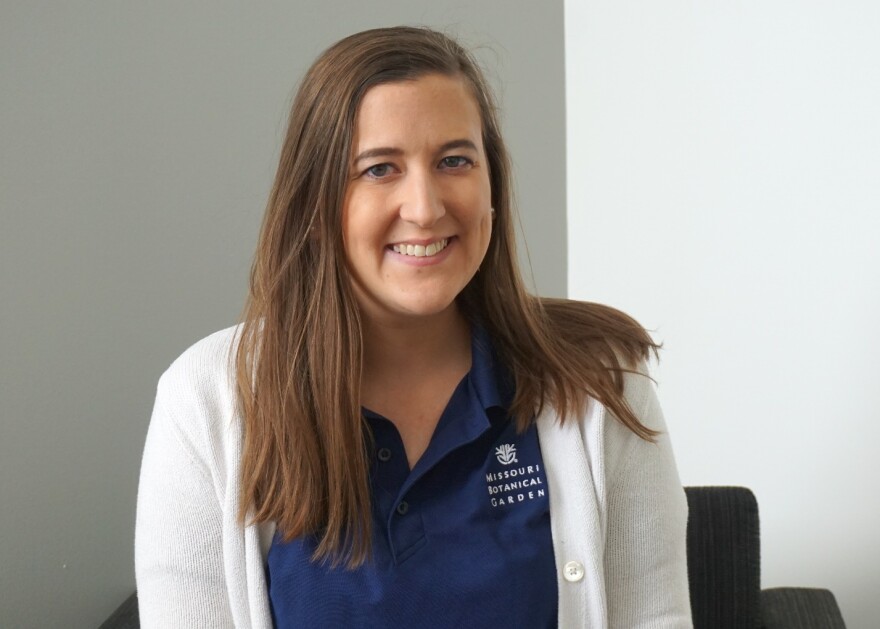Bush honeysuckle isn't native to Missouri, but the species is flourishing in the state. The infestation has impacted the diversity and abundance of native plants, eliminated essential habitats for the insects that rely upon native plants, and has provided poor nutrition for birds, among other issues. The honeysuckle also escalates human exposure to Lyme disease and ehrlichiosis, a tickborne bacterial infection, by increasing the activity of the tick host, whitetailed deer.
In an effort to upset honeysuckle infestation, the Missouri Botanical Garden has organized public events and volunteer removal days to raise public awareness about the need for bush honeysuckle removal and the benefits of replacing it with native plants.
On Wednesday’s St. Louis on the Air, host Sarah Fenske talked with the garden’s restoration outreach coordinator, Ali Brown, who is heading up the organization’s Honeysuckle Sweep Month.
How the European plant made its way to the Midwest
Brown said the honeysuckle is originally from the Amur River valley in eastern Russia.
“[Honeysuckle] was actually brought over thinking that it was going to be a really beneficial plant for wildlife … the red berries that it has, we thought, ‘Oh, these are going to be great for wildlife to eat.’ And it has an interesting root system that we thought was going to prevent erosion. But in fact, its shallow roots actually have a horrible effect on erosion; it actually increases erosion along our streams and waterways,” Brown said.

Despite how overwhelming it can seem to remove large swaths of the plant, Brown reiterated how simple the process can be.
“It's not actually too hard to remove,” she said. “It has pretty shallow roots, so you can actually dig it up by the roots in most areas, which is what a lot of our volunteers are doing. But there are also other options to remove the plant: You can cut it at its base and then apply a little bit of herbicide to the cut stump.
“Obviously, there's some human harm that can happen from using herbicides. So you want to make sure that you're being really safe and careful using protective equipment to protect yourself from that damage.”
Other top invasive plant offenders in the region are Callery pear, commonly referred to as Bradford pear, Japanese honeysuckle, which grows as a vine instead of a shrub, and wintercreeper.
The garden encourages Missourians to grow native plants once the invasives are removed to help restore balance to the habitat.
“Some great options are the redbud tree; dogwoods are another great option, or even the American beautyberry — those are pretty kind of nice-looking shrubs that kind of have the same growth form as the bush honeysuckle but provide a lot more benefits to our wildlife,” Brown said.
Listen to the full conversation:
Related Event
What: Invasive Species Solutions: When science, policy, and stewardship converge
When: 6-8 p.m. Thursday, Nov. 14, 2019
Where: Missouri Botanical Garden’s Ridgway Visitor Center — Shoenberg Theater
(4344 Shaw Blvd. St. Louis, MO 63110)
The event is free, but registration is required.
“St. Louis on the Air” brings you the stories of St. Louis and the people who live, work and create in our region. The show is hosted by Sarah Fenske and produced by Alex Heuer, Emily Woodbury, Evie Hemphill, Lara Hamdan and Tonina Saputo. The engineer is Aaron Doerr, and production assistance is provided by Charlie McDonald.
Send questions and comments about this story to feedback@stlpublicradio.org.



